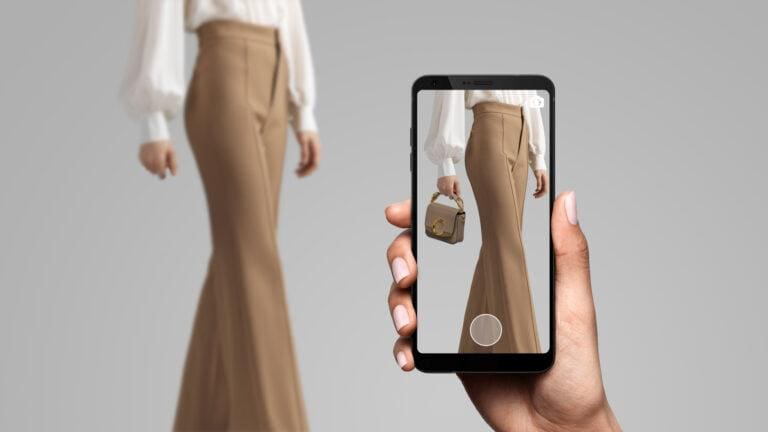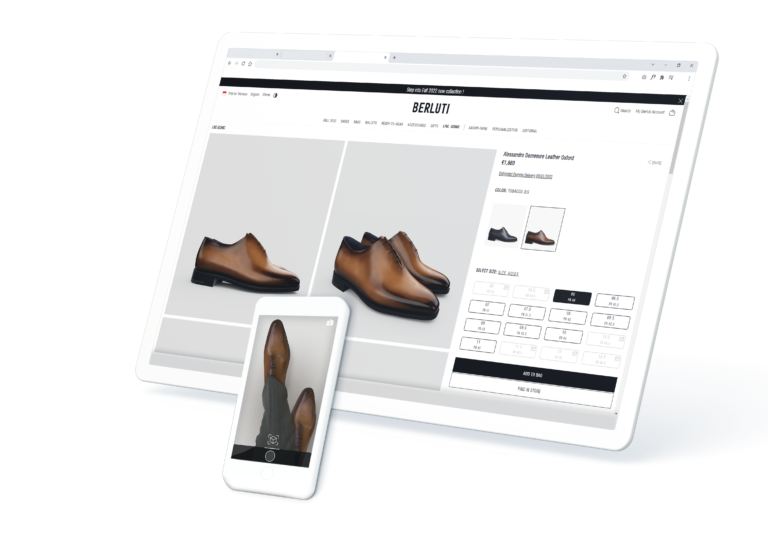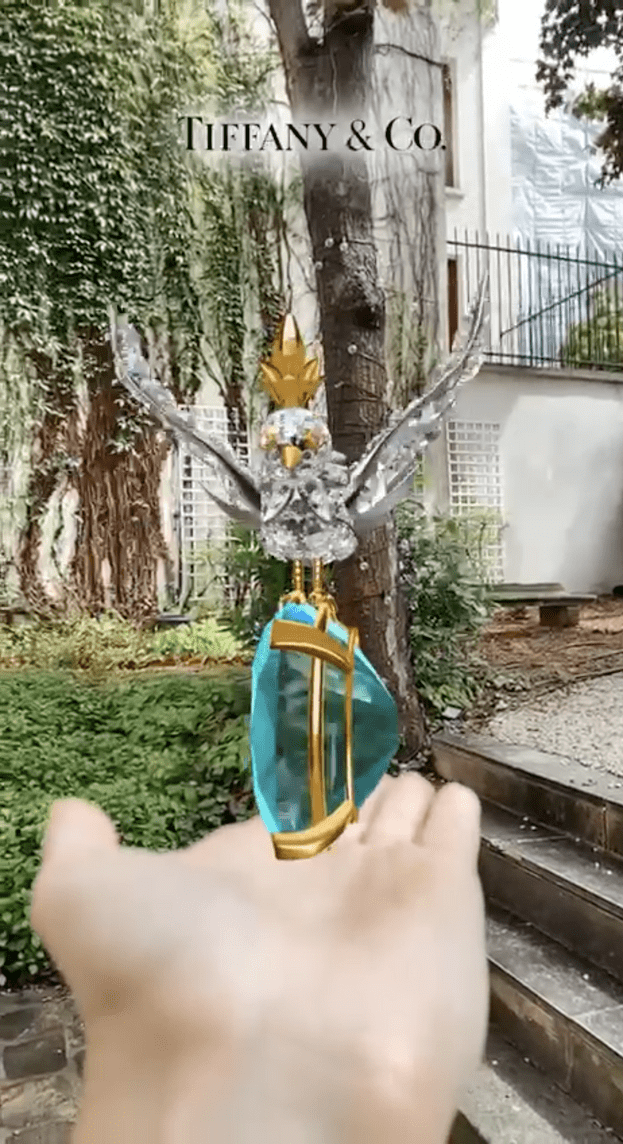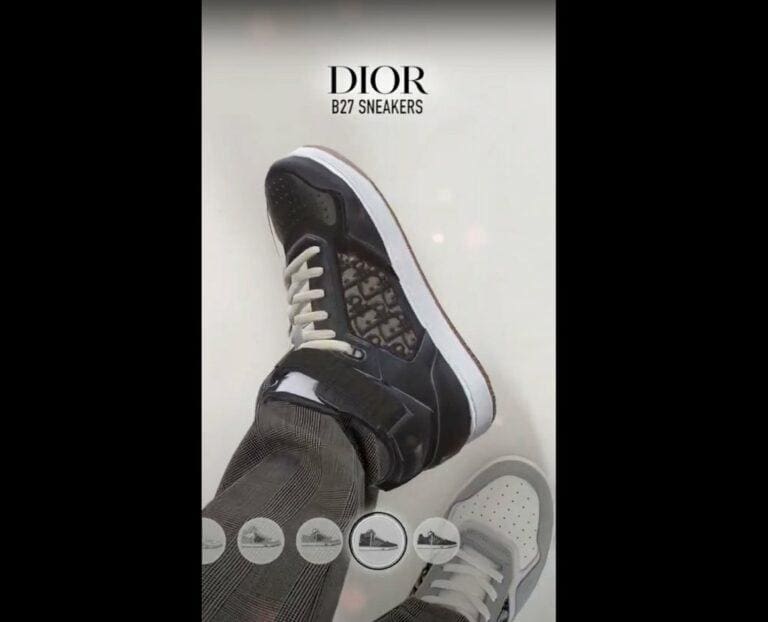The importance of 3D configurators for customer experience in the luxury industry
The importance of 3D configurators for customer experience in the luxury industry Table of Contents In the luxury industry, where attention to detail, exclusivity, and

Réalité Augmentée is a technology that enables users to seamlessly blend virtual objects with the real-world environment. It displays them in temps-réel de superimposed 3D renderings on the screens of devices such as phones and tablets.
Réalité Augmentée is expanding and becoming more common across a diverse range of applications. However, this article will focus on Réalité Augmentée solutions, mainly for the de la mode et la luxury industry.
Several studies and research have shown that Réalité Augmentée is much more than a merely promotional tool. To illustrate, 19.8% d' shoppers are more likely to make a purchase, after interacting with Augmented Reality [1].
These days, consumers are looking more and more for mémorables et la engaging experiences when dealing with e-commerce purchases. Recent research has highlighted how visuels 3D can enhance le purchase experience.
A report on e-commerce from Shopify confirmed that on average, Visualisation 3D increases conversions by 94%.

According to Geoffrey Perez, Global head of luxury at Snapchat, luxury brands view Réalité Augmentée as an extension de sa creative universes.
Les industries du luxury world started to experience this solution en 2015. The first company was Burberry. It released an AR app, which enables users to digitally repaint les surroundings with œuvre d'art by Danny Sangra, inspired by Burberry’s universe.
In line with studies, an Augmented Reality visualization will be a standard component of every brand’s digital shopping experience within three years, helping to boost conversion et la lower returns.
According to Boston Consulting Group, two-thirds of luxury purchases are now “digitally influenced,” Therefore, high-end brands are concentrating more on connecting with consumers online or through smartphones.
In fact, users are able to interact with clothing et la accessories, virtually try them on, compare the different pieces side by side, and view the looks in the same room as they are.

This project was developed to celebrate Tiffany & Co. 185° anniversary. The aim was to add a virtual dimension to this experience, through an Réalité Augmentée solution entirely created by Snapchat.
Users had the chance to wear le brand’s iconic jewels, as 3D renderings, simply by using les mobile devices. In particular, they had the possibility to try on the iconic Yellow Diamond through Snap Camera Kit.
Utilizing 3D technologies, particularly Augmented Reality, can produce a significant return on investment for brands.
By exploiting Snapchat’s AR solution, Tiffany & Co. provides its audience with fresh, tailor-made experiences to make them discover le brand’s universe.
L' brand forged a new kind of connection with its audience, engulfing them in its world and forging deep emotional connections. In the end, this emotional bond served as a means of boosting sales.

Les industries du Maison Dior exploited Snapchat’s Augmented Reality fitting to commemorate the release of its newest trainer.
Les industries du 3D technonogy experience encompasses the use of a dedicated lens allowing the virtual fitting de la six variations of the trainer, seen as 3D renderings. The experience is directly linked à la brand’s e-commerce, in an attempt to boost conversions.
The filter developed by Dior is an excellent example of an Réalité Augmentée implementation widely used in retail: virtual-try-on.
AR enables the integration d' 3D images into actual environments. With the aid of virtual try-on tools, you can visualize how products would appear on your body de manière physical store.
Le 3D visualization service helps brands to implement a virtual try-on tool on their website. In this way, customers will be given more information to consider before making a choice.
SmartPixels’ Augmented Reality solutions
SmartPixels is a leader de la manière la visualization et la creation d' interactive 3D digital twins. Digital assets for a range of applications, including augmented reality, can be created et la implemented using the SmartPixels 3D rendering software.
SmartPixels uses glTF file formats to deliver Augmented Reality solutions. An open-source file format called glTF (Graphics Language Transmission Format) was created for the quick transfer et la loading of 3D models with a large amount of data.
A 3D rendering of a product that has been created can be exported comme glTF file. This file format is becoming more popular as the current standard for data streaming to augmented reality applications because of its speed, readability, and a high degree d' adaptation.
Therefore, if your platform supports a more contemporary format and your brand’s objective is to transfer 3D renderings in real time, SmartPixels can integrate glTF file formats to satisfy all of your needs.
SmartPixels is a leader de la manière la development d' highly personalized experiences and ultra-realistic visuels 3D. Please get in touch with the team to develop your next AR experience!
*Sources:
[1] https://hbr.org/2022/03/how-augmented-reality-can-and-cant-help-your-brand
The importance of 3D configurators for customer experience in the luxury industry Table of Contents In the luxury industry, where attention to detail, exclusivity, and
3D rendering vs 2D: what are the benefits of one over the other? Table of Contents 3D rendering offers a significant leap in realism compared
How do 3D product configurators reduce e-commerce returns? Table of Contents Overview of e-commerce product returns % of people who claim to retunr their online
Omnichannel strategy: the keys to a successful experience Chloé Tokyo store with a personalization experience created by SmartPixels The global pandemic has forced brands around
How AR helps luxury brands to build immersive experiences What is Augmented Reality? Augmented Reality solution by SmartPixels Augmented Reality is a technology that enables
Deep-dive into glTF file format During recent years, the glTF file format has gained more and more prominence, due to its functionality and the wide variety